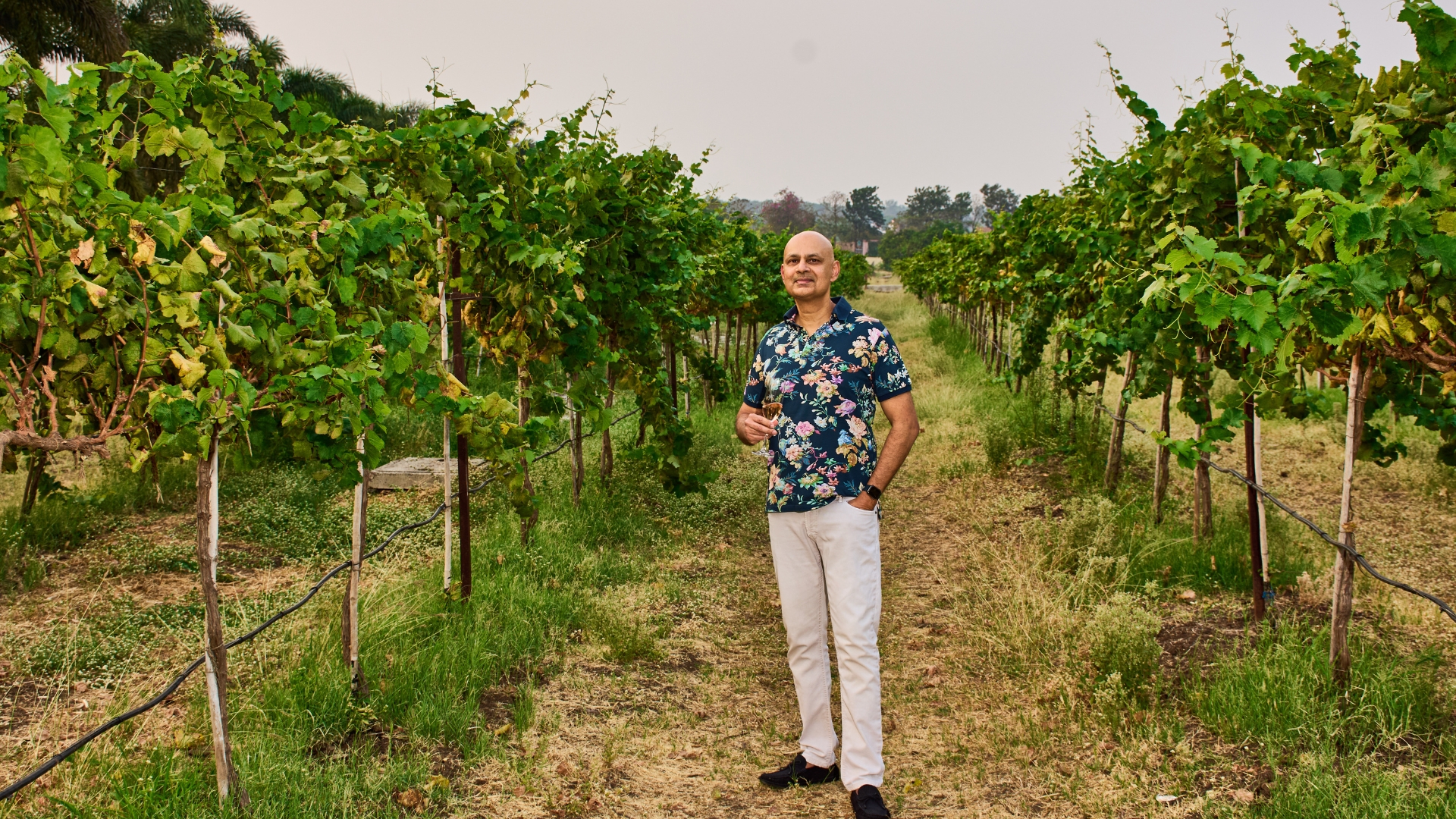Crafting India’s Wine Story
How Sula Vineyards cultivated India's wine culture, pioneered wine tourism, and created a company that enjoys 50% of India’s wine market share.
By Deepali Nandwani
It isn’t everyday that a highly successful engineer, who migrated to San Francisco in search of the eternal American dream, heads back home. But then, Rajeev Samant, the CEO and founder of Sula Vineyards—one of India’s largest wine-making companies, was just following his heart’s dictat.
As Rajeev Samant scans the vineyard he created, and the new tourism and hospitality model he pioneered in India, you can sense him reflecting on the years of sheer grit and an audacious dream.
Today, Sula sells over a million cases annually, manages more than 2,800 acres of contracted vineyards, and crushes upwards of 11,000 tonnes of grapes. With over 50% market share in India’s premium wine segment, it remains the country’s largest wine company.
In a candid interview, Samant traverses a wide range of topics—from winemaking innovation and storytelling through wine to Sula’s growing hospitality business.

A bird’s eye view of the Sula Vineyards, sprawled over 1800 acres, with its vineyards, hotel restaurant and tasting room.

Life-size bottles dot the vineyards that is open to guests of the tasting room.
Let’s go back to where it all began. When you look back on the idea that sparked Sula, how does it feel today to be at the heart of what’s become a pioneering wine tourism movement in India?
It feels incredible. Looking back, I think—wow, what have we created? It’s truly something remarkable. The entire Sula campus in Nashik is extraordinary. This is now the world’s most visited vineyard. Who would have imagined that back in 2000 when we sold our first bottle? By 2005, we opened India’s first winery tasting room. And today, to be the most visited vineyard globally—that’s an amazing legacy. If that’s what I leave behind, it’s already something to be proud of.
Do you see your legacy as having created a market for wine in India, where none existed before? Or do you see it more holistically—as the entire journey?
There are so many things we've achieved, so many milestones we've pioneered over the years. One of the most significant achievements is being the person—and Sula being the brand—that truly brought wine to India. For so many Indian wine drinkers, Sula was the first glass they ever tasted. That’s something we will never lose—that sense of pride and accomplishment. Wine is such a beautiful beverage. And what's even more special is that it's made right here—in the vineyards of Nashik, Maharashtra, and Karnataka. Who would have thought, back then, that we could grow such exceptional grapes and produce award-winning wines—wines that are now sold all over the world?
And what were the turning points in your journey as a winemaker?
The first bottle we ever opened—with my wine mentor Kerry Damskey—was a landmark moment. It was a bottle of Sauvignon Blanc. The harvest was in 1999, and we sold our first bottle in 2000. We sat on the porch of my home, just five minutes from here, and tasted the moment of truth. From that first sip, we knew we had created something special—a wine better than anything produced in India before. That was a huge ‘aha’ moment. It gave us the confidence to push forward, especially after the long, hard journey of setting up the winery, planting vineyards, and navigating permissions—all without knowing what the final result would be.
What would you consider the stumbling blocks along the way?
Stumbling blocks remain—especially bureaucracy. India’s excise system is mind-boggling. As a producer, you’re always on the back foot. You never know when someone might suddenly deliver a huge thapad (slap) in some state—overnight, the rules can change—taxes or label fees can double, or imported wines get favoured over Indian ones. It is the regulatory environment that holds us back. That said, we do see green shoots and remain hopeful that the regulatory environment will improve.
2022 was a significant year for you with the IPO. Three years later, how has becoming a listed company affected your business strategy?
The 2022 IPO was a major milestone—we were India’s first publicly traded pure-play wine company, so all eyes were on us. Listing during a tough market window, before the IPO floodgates opened in mid-2023, made it challenging—but we led the way. Today, we have over 100,000 shareholders, which is rewarding. That said, wine is a long-term business, unlike spirits or typical consumer products. It took 22 years to reach the IPO stage. Developing a wine like our Tropical Rosé takes years, and scaling production isn’t as simple as flipping a switch—it’s a five-year grape-growing cycle. So, quarterly results don’t capture the full picture. We remain optimistic about the future and focus on communicating that vision and delivering consistent results over time.
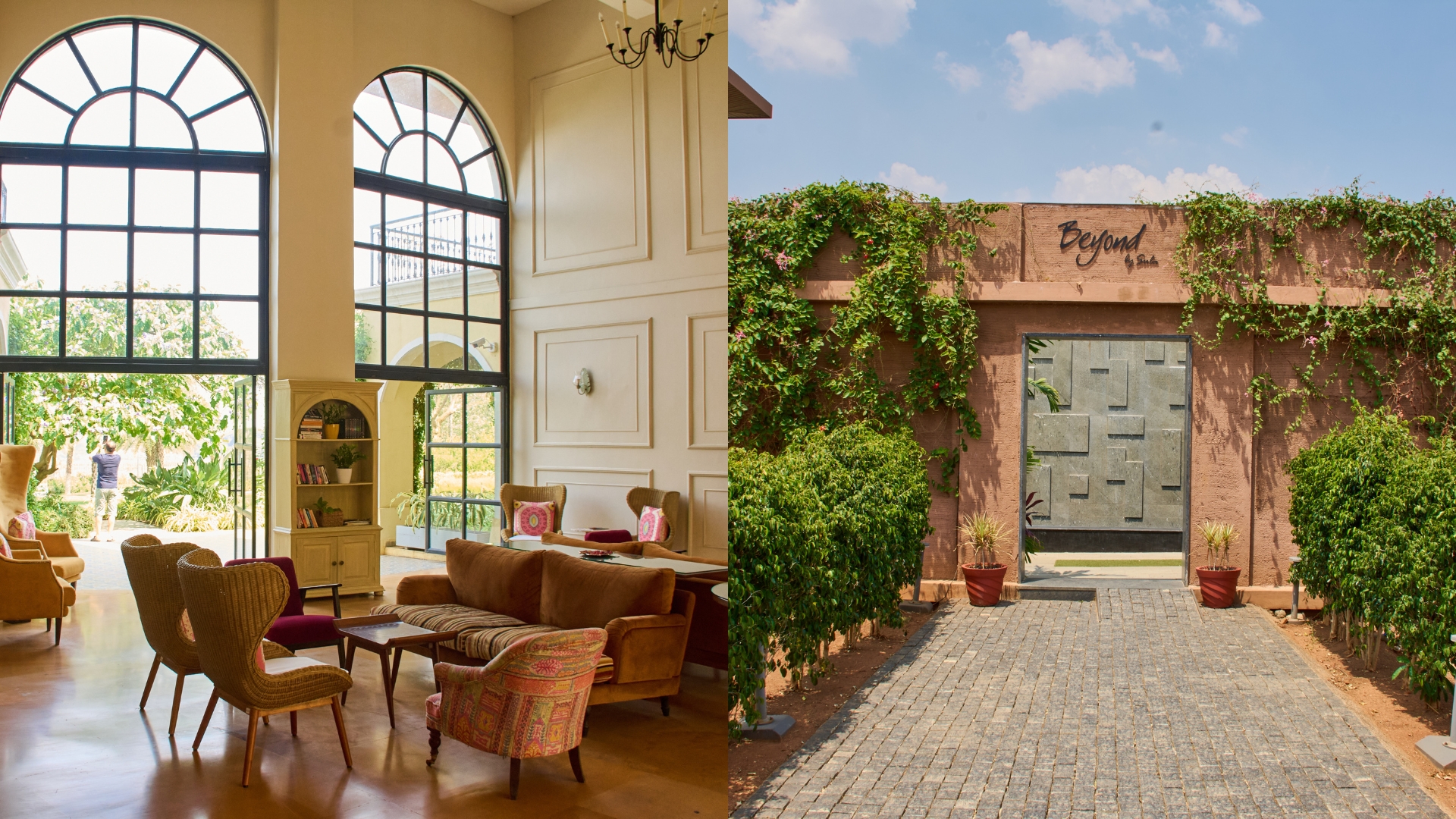
The sun-dappled lobby of the Sula Vineyard’s The Source at Sula, their boutique hotel.

Wine maker Kerry Damskey, whom Rajeev Samant considers a mentor.
Looking at some figures—Sula delivered an ROE of 16.96% in the year ending March 31, 2024—outperforming your last five or six years of performance. What does 2025 look like for you?
I’m not the one to comment specifically on financial performance. I’d much rather focus on the kinds of things we’ve achieved—like winning awards for our wines across the world, and continuing to innovate with every wine we create. Sure, financial performance and metrics are very important to us. But ultimately, we’re looking at the long term—where are we going to be in five or ten years? That’s the real question. And I certainly see a future—not too far off—where we’ve doubled in size, where we’re producing wine in a few more states across India, and where Indian wine has firmly established itself on the global map.
The Indian consumer is generally quite price sensitive. Yet, you've launched a number of premium wines. How do you balance affordability with the premium end of your business?
I’m quite pleased to say that we still hold true to our original promise to consumers: to offer the best quality wine at every price point. Definitely the premiumisation story is an important one. But as a public company, we’re mindful of the need to show growth—but also of the price sensitivity among Indian consumers. You can’t keep launching higher-priced wines without ensuring accessibility. And I believe we’ve struck the right balance. For example, our most premium offering, the Rasa Cabernet, is priced at about ₹2,000—and in the broader context of the global wine world, that’s not an especially high price. Imported wines typically start at ₹1,300–1,400 and go up significantly, while our wines remain far more approachable. The classic Sula range is priced under ₹1,000 in states like Maharashtra and Karnataka—often as low as ₹700 by the case. Our Source range sits between ₹1,000 and ₹1,400, and we even offer wines like Madeira starting at ₹500. We want people to walk into a wine shop and feel welcomed—not intimidated by price.
Which wine in your portfolio would you consider groundbreaking—one that truly propelled your brand and business forward?
That would be our very first wines—the Sula Sauvignon Blanc and Chenin Blanc. They were India’s first true varietal wines, allowing Indian consumers to identify and appreciate distinct styles. Until then, most wines in the market were generic and lacked character. These wines also represented real innovation. We were the first in India to use refrigerated stainless steel tanks, preserving freshness, acidity, and complexity—qualities that were otherwise lost. We were the first to produce wine in a can, starting with our more affordable Dia range. Today, we also offer our Sula Chenin Blanc, Zinfandel Rosé, and Red Zin in cans—again, a pioneering move. This bottle in front of you—our Rosé Tropical—is another breakthrough. It’s India’s first Prosecco-style wine, made using a more immediate, less labour-intensive method than the traditional méthode champenoise, which can take up to a year. This approach lets us release the wine just four months after harvest. It’s lighter, fresher, and fruitier—and made possible by cutting-edge technology and significant investment.
Do you think the Indian palate has become more sophisticated over time?
We have a broad spectrum of consumers today—some have been with us for over two decades, and naturally, their palates have evolved. What’s always fascinated me is how well India lends itself to white and rosé wines. Our warm climate and bold, spicy cuisine pair beautifully with crisp, aromatic whites like Sauvignon Blanc and Riesling. Yet, over the past 7–8 years, the market has tilted heavily toward reds. When we started, the split was roughly 50-50 between reds and whites, with rosé barely in the picture. Today, reds account for about 65–70% of the market, whites around 25%, and rosés between 5–10%. It reflects global trends to some extent, but red wine has really taken over in India. Still, I often urge people to revisit whites. They’re incredibly well-suited to our food and climate. The joy of sipping a chilled glass of white wine in our climate is worth exploring. Chilled white wine, like beer, pairs beautifully with Indian cuisine. That said, lighter, fruitier reds that can be slightly chilled—like our Source Pinot Noir or Source Cabernet Sauvignon—are gaining traction. It’s a trend we’re watching closely.
What do you think is the perception of Indian wine?
Globally, Indian wine is still in its early days—but within India, Sula has become a household name. In wine, brand matters, and we’re proud to be the most recognised wine brand in the country. About a decade ago, we launched The Source to cater to evolving consumers with more disposable consumers—those who began with Sula and later sought more premium or international experiences. The Source and Rasa were our way of bringing them back into the fold. Today, wines like our Source Grenache Rosé—widely regarded as the best Indian rosé—are flying off the shelves at ₹1,200.
There’s clearly an audience willing to spend ₹2,000, ₹2,500, even ₹3,000 on a bottle. But at that price point, we’re competing head-to-head with imported wines. That pushes us to continuously raise our game—and I believe we’ve delivered. Imported wines, of course, will always be part of the Indian market. Many producing countries export aggressively because their domestic markets can’t absorb all they make. So yes, there’s intense competition, deep discounting, and plenty of incentives. That said, our wines are now on the wine lists of leading restaurants in New York, London, and Singapore. That speaks volumes—but we know the global journey is still ahead. As for the influx of international brands into India, we actually see it as a positive. It builds awareness. Every importer runs promotions, events, and tastings—and all of that helps grow the category. We haven’t been significantly impacted—touchwood—but imported wines are here to stay. They’ll always have a share of the market, and that’s fine. Ultimately, we’re all part of the same ecosystem. Whether you’re an Indian producer or an importer, we should be working together to promote wine culture in India.

The Sula Fest returned in 2025 after a five-year hiatus, marking its 14th edition, and is considered a major music-meets-wine festival in India.
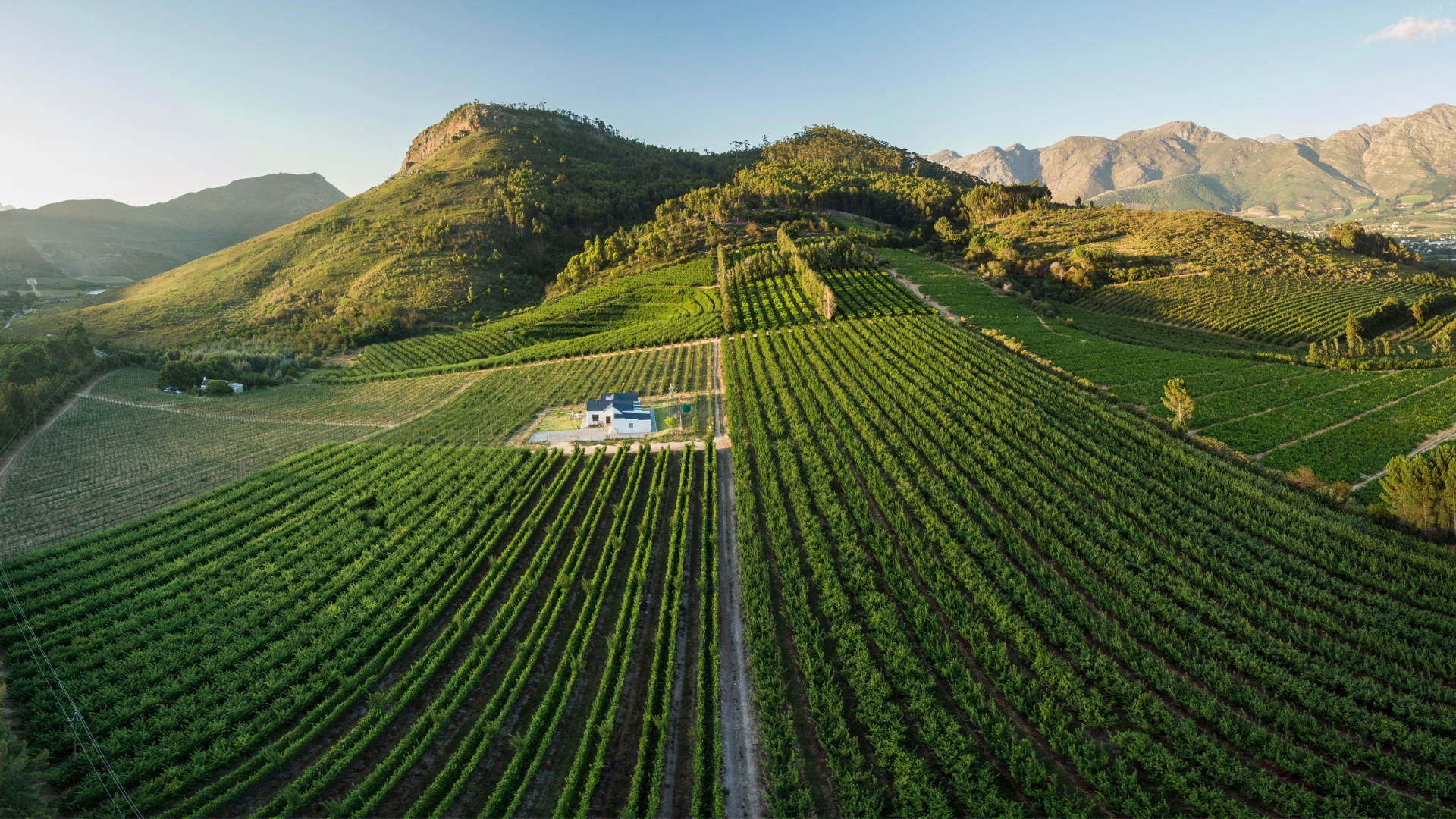
Sula Vineyards is shifting to gentler practices: fewer chemicals, smarter irrigation, and deep collaboration with our growers.
Globally, Indian wine is still in its early days—but within India, Sula has become a household name. In wine, brand matters, and we’re proud to be the most recognised wine brand in the country.
Rajeev Samant
CEO & Founder of Sula Vineyards

What is the most recent innovation within Sula that has excited you?
One key thing we’ve clearly understood is the need to cater to diverse palates—something true of wine drinkers everywhere. Our Sula range, priced around ₹800 and under ₹1,000, leans toward the New World style. With our wine mentor Kerry from Napa, that influence is natural. Interestingly, Indian and American preferences are quite aligned—both tend to favour a touch of sweetness and fruit-forward profiles, unlike the drier, more austere wines preferred in Europe. You’ll see that fruit-driven character across our Sula portfolio, and especially in our Source range, where we’re introducing a slightly more Old World sensibility.
That said, the old New World vs. Old World divide is becoming less rigid. Take Rhône-style Syrahs, for instance—producers now focus more on letting the fruit shine rather than on heavy oak or tannins. We aim for fresh, vibrant wines that highlight the fruit—not big, heavy styles that overwhelm. In India’s climate, a bold wine might work for a single glass, but it can quickly feel tiring. We want wines that stay light and enjoyable—even after two or three glasses.
Do you think India will ever develop a terroir-driven wine culture like France?
Perhaps someday. But right now, our approach is more aligned with the New World wine philosophy. France has a deeply complex, rigid classification system dating back to 1855. It’s historically rooted, but with climate change, even France is re-evaluating that model. We’ve chosen a different path—one where the grape varietal is the focal point. Indian consumers are still learning, and they tend to choose wine based on the grape—Cabernet vs Pinot, Merlot, or Chardonnay vs Sauvignon Blanc—rather than terroir or specific regions. That kind of terroir-driven sophistication might take time to develop here, if it
does at all.
Sula has a well-established hospitality business. I’d love to get your perspective—especially on how destinations like California have influenced your thinking.
I studied in California and had the chance to visit Napa Valley years ago. Napa itself was a trailblazer in the world of wine tourism, and what they had built there left a deep impression on me. Seeing what they were doing—especially at Robert Mondavi Winery, a true pioneer in global wine tourism—left a lasting impression on me. Napa was ahead of its time, and it showed me the power of welcoming people to the vineyard, letting them experience the wine where it’s made, and building a cultural ecosystem around it. That vision—of combining wine with food, music, and celebration—has stayed with me ever since. Wine has always been tied to culture and community, going back to ancient times. So for me,hose experiences aren’t optional—they’re essential.
It was a landmark moment when the Maharashtra government allowed every qualifying winery to automatically receive a license for tourism-related facilities: tasting rooms, bottle shops, even hotels. We worked closely with the government to help shape those policies. At Sula, wine tourism isn’t an add-on—it’s a core part of who we are. It drives awareness, builds loyalty, and fuels growth. For many people, their first taste of Sula comes at our vineyard. They visit, enjoy, and leave as brand ambassadors.
What have been the learnings over the years?
We’ve definitely made some mistakes or missteps and had to pivot over the years. One key area was our imports business. At one point, it contributed nearly 20% of our revenue, but over the past five years, we realised it was largely unprofitable and unsustainable. Many enter the space without understanding India’s structural challenges. Someone might visit a Tuscan winery, taste a €7 bottle, and think, “This could sell for €30 in India—I’ll make a fortune.” But that overlooks the complexities of import duties, distribution, and price sensitivity here. At Sula, we’ve come to truly appreciate the strength of our own portfolio. We’ve shifted focus to building and promoting our own labels rather than importing others. That transition has been a turning point. Was the import push a mistake? Not exactly. It was part of our evolution—what didn’t work shaped what ultimately did. Now, our focus includes long-term sustainability. Climate change is already impacting the global wine industry—from Napa to Nashik—and we’re thinking about how to adapt.
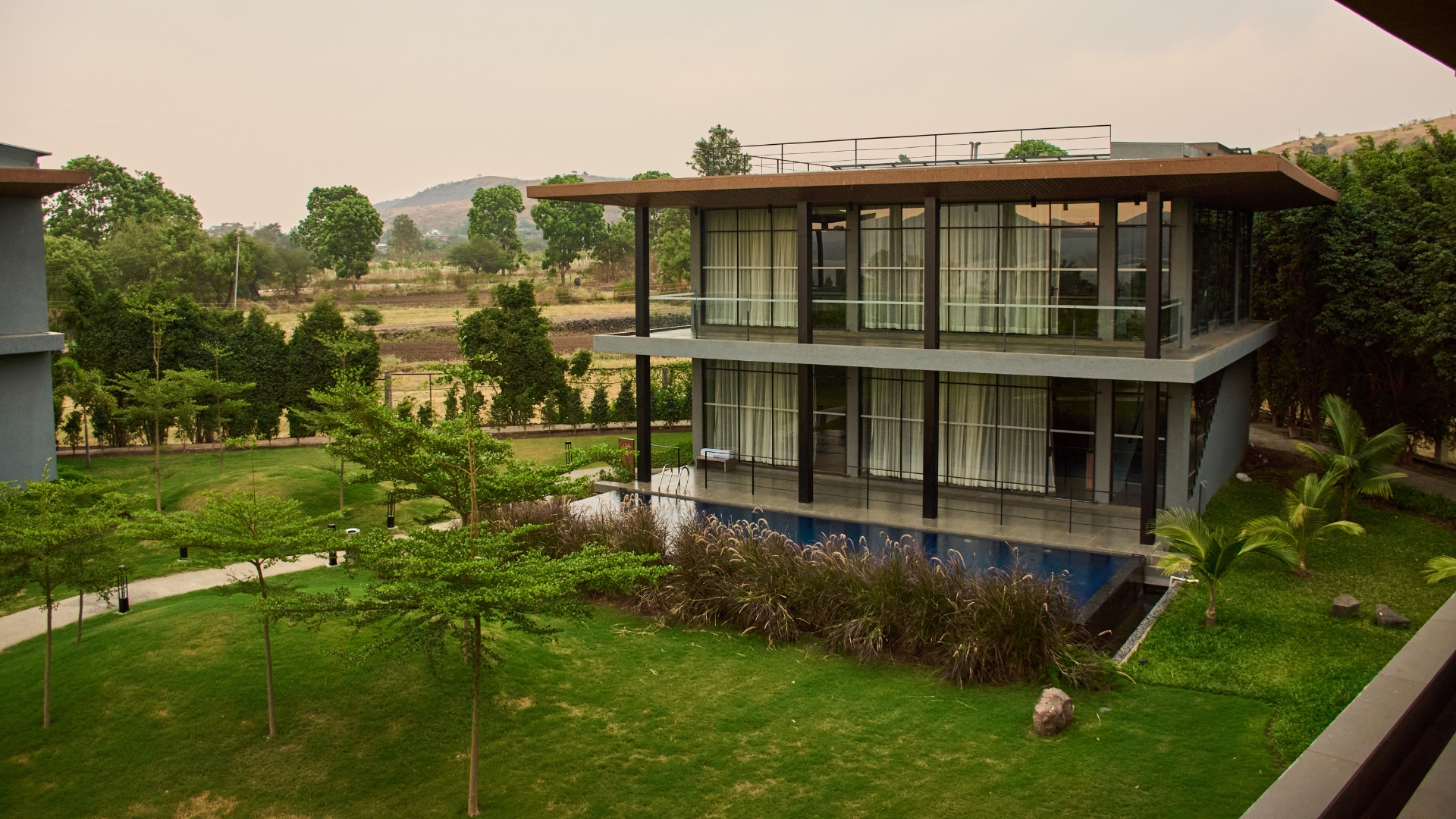
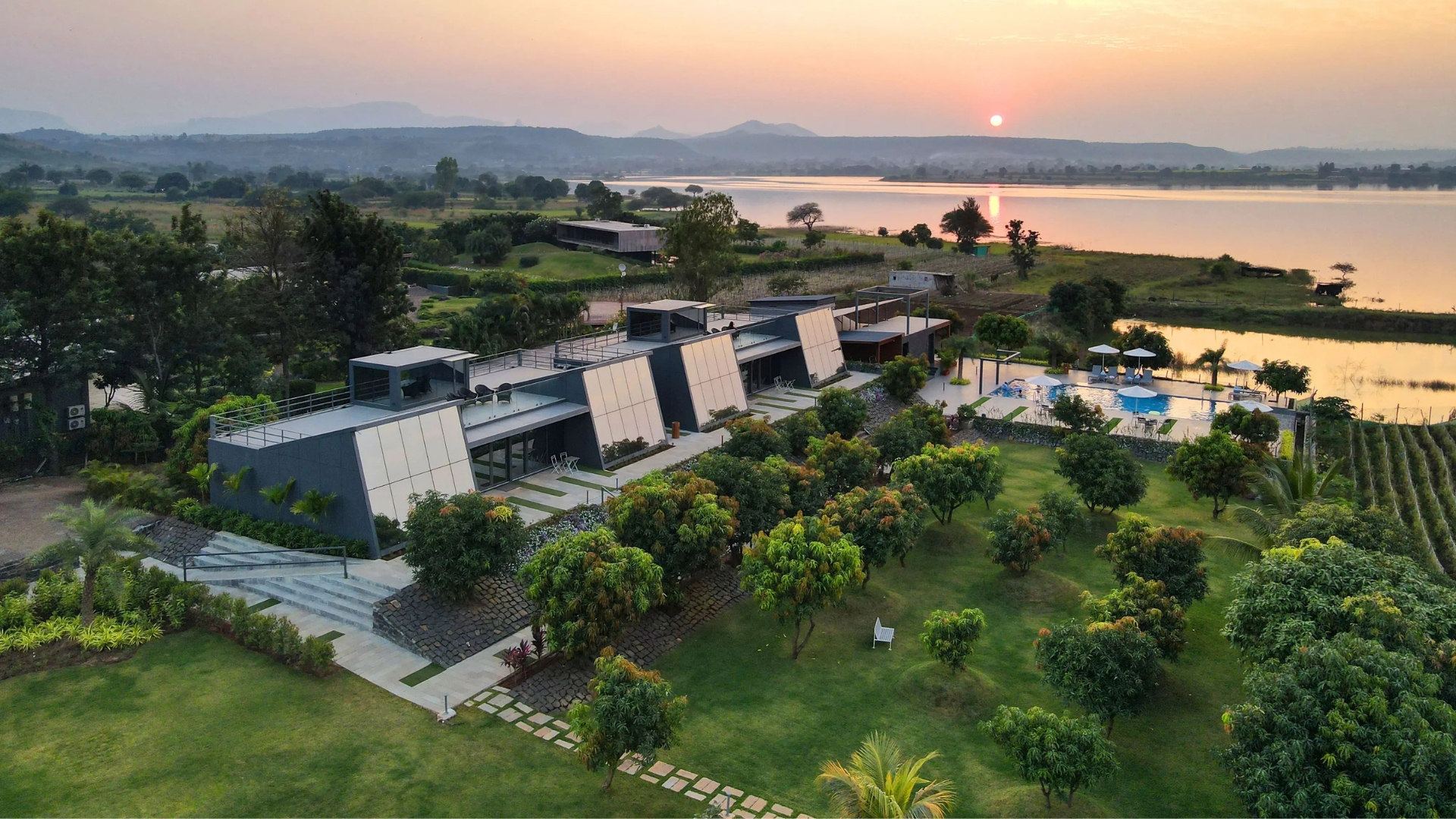
Climate change has affected the wine industry worldwide. At Sula, how are you dealing with it?
Sustainability and climate change are no longer future concerns—they're immediate realities. We’ve all seen what it’s doing to Napa Valley and to the global wine industry at large. And yes, it’s certainly having an effect here in Nashik as well. While the world talks about the 1.5°C threshold, many grape-growing regions in India, including ours, have already crossed 2°C. The effects are tangible and growing. At Sula, sustainability is a core, non-negotiable pillar of our business. We’re constantly adapting—rewilding the areas around, planting more climate-resilient grape varieties, harvesting earlier to preserve freshness, and integrating renewable energy across our operations. Solar panels now power much of what we do, and we track every drop of water and every unit of energy we use.
Our sustainability goals are embedded into our team’s KPIs—reducing water and energy consumption per case isn’t aspirational; it’s operational. To mark our 25th anniversary, we planted 25,000 trees just five minutes from here—a small but meaningful step. In the vineyards, we’re also shifting to gentler practices: fewer chemicals, smarter irrigation, and deep collaboration with our growers. It’s an ongoing effort. The wine industry is changing fast, and we’re committed to leading that change in India.
Which regions excite you in terms of future growth?
If I had to pick one region that’s shown the most exciting growth over the past three to five years, it would be Hyderabad in particular, and Telangana in general. Hyderabad is now one of the fastest-growing wine markets in India and may soon rank just behind Mumbai in per capita consumption. We’re also seeing momentum in regions like the northeast, Pondicherry, and more recently, Kerala—where policy changes are creating new opportunities. Much of this growth is shaped by excise and taxation policies, which is why we stay actively involved in public affairs and advocacy. Some efforts succeed, others don’t—but wherever policy improves, consumption follows. And when taxes rise, demand shifts elsewhere. In Maharashtra, second-tier cities beyond Mumbai and Pune are also on the rise. While Nasik remains a key market, places like Nagpur, Aurangabad, and Sholapur are seeing steady growth in wine consumption.
Do you believe wine can tell a story? And how do you bring that narrative to life?
Absolutely. Wine must tell a story. I’ve been hosting fireside chat tastings—intimate gatherings of 60–70 people—at clubs and venues like Soho House, Bombay Gymkhana, Willingdon Club, and The Quorum. We’re also starting to do these with corporates. During these events, I tell the story behind each wine. Luckily, as pioneers, we have many stories to tell—how Sula was named after my mother, Sulabha; how we discovered that Grenache thrives in Nashik; which grapes didn’t work; how we collaborate with grape farmers; and why certain wines pair well with regional Indian cuisines. People connect with these stories. For instance, someone might ask, “What wine goes best with Gujarati food?” You need to have thoughtful, authentic answers—your stories—ready to share.


























